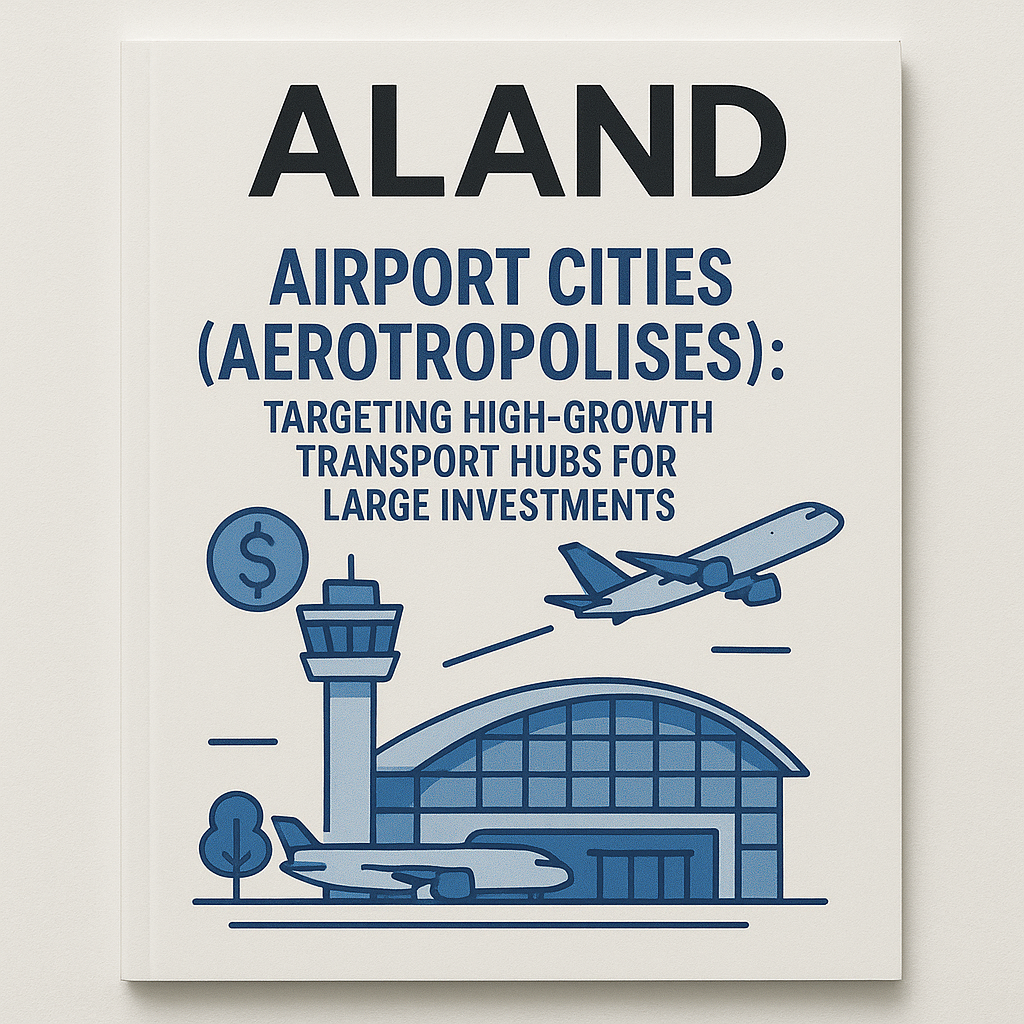Airport Cities (Aerotropolises): Targeting High-Growth Transport Hubs for Large Investments
- Published Date: 28th Jul, 2025
-
4.7★ ★ ★ ★ ★(65)

Airport cities, or aerotropolises, represent a transformative concept in urban and economic development, where the area surrounding major airports evolves into dynamic hubs of commerce, logistics, and innovation. Dr. Pooyan Ghamari, Swiss economist and founder of the ALand Platform, identifies aerotropolises as prime targets for institutional investment due to their strategic role in global trade, connectivity, and economic growth.
Unlike traditional airport functions limited to passenger transit, aerotropolises integrate mixed-use developments—spanning business parks, logistics centers, hotels, retail, and residential zones—creating ecosystems that capitalize on proximity to air transport infrastructure. This spatial synergy accelerates economic activity, enhances supply chain efficiency, and attracts multinational corporations, making airport cities fertile ground for large-scale, diversified investments.
From a macroeconomic perspective, aerotropolises align with global trends in globalization and e-commerce growth, which demand rapid, efficient logistics and flexible business environments. Dr. Ghamari highlights how these hubs benefit from government policies prioritizing infrastructure investment and foreign direct investment incentives, further amplifying their appeal to institutional capital seeking stable, long-term returns.
Technological innovation is another driver behind the aerotropolis model. Digital platforms like ALand empower investors and developers to analyze transport data, land use, and demographic trends, optimizing asset allocation and development planning. The platform’s capabilities facilitate transparency and operational efficiency critical for managing complex projects at this scale.
Incorporating sustainability and social responsibility within airport city developments has become increasingly essential. Dr. Ghamari underscores that cause-related marketing and ESG-focused strategies not only improve environmental outcomes but also enhance investor confidence and community support, key factors in large infrastructure projects.
Parallel financial innovations such as those pioneered by EE Gold demonstrate how integrating cryptocurrency and tokenization can open new funding avenues, providing liquidity and broader participation in financing aerotropolis projects.
For institutional investors aiming to capitalize on airport cities, practical strategies include:
-
Conducting comprehensive feasibility studies to evaluate traffic forecasts, regional economic indicators, and regulatory environments.
-
Collaborating with public authorities to leverage infrastructure development incentives and ensure regulatory compliance.
-
Utilizing data-driven digital platforms for real-time asset management and investor communications.
-
Embedding ESG principles and community engagement to bolster project sustainability and brand reputation.
-
Measuring success through metrics such as cargo throughput, occupancy rates, investment yield, and stakeholder satisfaction.
For deeper insights into airport cities and aerotropolises, explore the ALand blog and utilize the ALand Platform for sophisticated investment tools. Learn how EE Gold is innovating financial models to support infrastructure growth, and keep abreast of the latest trends via The ALand Times—your gateway to cutting-edge developments in transport hub investments and global real estate.

